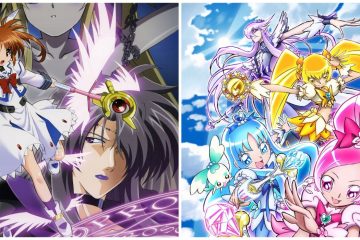Since the beginning of the Wano Country Arc, One Piece’s popularity has skyrocketed, taking the series to new heights thanks to its long-term storytelling and the increased production value of its anime adaptation. Monkey D. Luffy’s journey across the Grand Line is finally reaching its climax after 25-plus years of syndication, and in anticipation of his coronation as the King of the Pirates, many fans are reflecting upon the legacy that he has left behind.While narrative arcs like Enies Lobby, Marineford, and the aforementioned Wano Country Arc receive plenty of due praise from the One Piece fanbase, many other sequences are more underappreciated. In particular, the Straw Hat Pirates’ adventure in the land of Skypiea has been subject to significant, undeserved criticism over the years — thankfully, as time goes by, the Skypiea Arc’s unique narrative continues to age like fine wine, giving it a legitimate claim as the most underrated arc in the entire series.To understand how the Skypiea Arc’s reputation has changed since its debut, it’s helpful to first develop a loose history of its reception from fans. The Skypiea Arc aired in Japan throughout 2003 and 2004, roughly coinciding with the first episodes of 4Kids’ infamous localization of the anime in North America; given this overlap, the Straw Hat Pirates’ journey through Skypiea was the most recent, fully-completed arc when One Piece initially exploded in international markets. Because of this timing, as well as Skypiea’s status as one of Luffy’s first major adventures in the Grand Line, the sequence was placed under increased scrutiny, leading to natural comparisons to the two sagas that it is sandwiched between: Alabasta and Enies Lobby. These two narrative sagas are among the best in the entire series, making them an unfair point of reference for the Skypiea Arc that naturally led to it being devalued by some fans.RELATED: Luffy’s Gear 5 Technique, ExplainedRELATED: One Piece: Who Is Zunesha And What Is Their Connection To Joy Boy
Since the beginning of the Wano Country Arc, One Piece‘s popularity has skyrocketed, taking the series to new heights thanks to its long-term storytelling and the increased production value of its anime adaptation. Monkey D. Luffy‘s journey across the Grand Line is finally reaching its climax after 25-plus years of syndication, and in anticipation of his coronation as the King of the Pirates, many fans are reflecting upon the legacy that he has left behind.
While narrative arcs like Enies Lobby, Marineford, and the aforementioned Wano Country Arc receive plenty of due praise from the One Piece fanbase, many other sequences are more underappreciated. In particular, the Straw Hat Pirates’ adventure in the land of Skypiea has been subject to significant, undeserved criticism over the years — thankfully, as time goes by, the Skypiea Arc’s unique narrative continues to age like fine wine, giving it a legitimate claim as the most underrated arc in the entire series.
To understand how the Skypiea Arc’s reputation has changed since its debut, it’s helpful to first develop a loose history of its reception from fans. The Skypiea Arc aired in Japan throughout 2003 and 2004, roughly coinciding with the first episodes of 4Kids’ infamous localization of the anime in North America; given this overlap, the Straw Hat Pirates’ journey through Skypiea was the most recent, fully-completed arc when One Piece initially exploded in international markets. Because of this timing, as well as Skypiea’s status as one of Luffy’s first major adventures in the Grand Line, the sequence was placed under increased scrutiny, leading to natural comparisons to the two sagas that it is sandwiched between: Alabasta and Enies Lobby. These two narrative sagas are among the best in the entire series, making them an unfair point of reference for the Skypiea Arc that naturally led to it being devalued by some fans.
#Skypiea #Pieces #Underappreciated #Arc
Note:- (Not all news on the site expresses the point of view of the site, but we transmit this news automatically and translate it through programmatic technology on the site and not from a human editor. The content is auto-generated from a syndicated feed.))



